No, DC clamp probes have scales well above ±10,000A. Does no-one even check Amazon for their ±12000A DC to 40kHz current probe needs any more?
 I jest. But you can totally buy that on Amazon. And they have 10 in stock. None of them qualify for Amazon Prime though :(.
I jest. But you can totally buy that on Amazon. And they have 10 in stock. None of them qualify for Amazon Prime though :(.
Whatever you do, ignore all these people telling you to use a shunt. No, do not use a shunt. There is absolutely no advantage to using a shunt in this application besides a very slight edge in measurement accuracy, and ridiculously huge downsides.
Why a shunt is a terrible idea:
Any solution that works by measuring the resistive voltage of a conductor (shunt) that can have any reasonable resolution will also require a prohibitively large voltage drop. As another poster mentioned, a typical 50mV shunt would dissipate 500W. This is an irresponsibly large waste of energy when you can measure the current for less than a watt of power consumption.
It will need its own active cooling at all times. So there is that much more energy wasted, but more importantly, you've introduced a single point of failure into your power distribution system. What was once able to passively carry on the order of 10kA will fail very quickly if at any point the cooling for the shunt fails or has a lapse in performance, causing the shunt to melt and act like the world's most overpriced and slowest-blow 10kA fuse ever made.
Let's not kid ourselves, one doesn't just casually put a 10kA shunt in series with a 10kA capacity cable using alligator clips and banana jacks. Installing such a device in series with that cabling is going to be a non-trivial task, and it will not be something you can easily remove on a whim. I would expect it to become a permanent liability in your system.
I don't care if the cable is carrying 10kA at 1V (for whatever reason) - I (and you yourself should) demand galvanic isolation in such a measurement apparatus. 10kA is a lot of current, and it can't help but store terrifying amounts of energy in the magnetic field alone.
I don't even know what the dimensions of a wire or bus bar capable of carrying that would be, but let's go with a relatively low-inductance geometry: a solid copper pole 2 inches in diameter. If in a simple, straight line, this will have ~728nH of inductance per meter. At 10kA, this conductor will have roughly 35J of energy stored in its magnetic field alone!
Of course, in practice, it will be much much lower as the return conductor will be close by and it would probably be large, flat bus bars, further lowering the inductance.
But still - you should plan for a 10kA cable to induce some spectacular failures in anything connected to it should anything go wrong. Including (or especially?) stuff like a $1800 NI DAQ board. There is a law that one can derive from Murphy's law that states that the more expensive the data acquisition gear, the more thoroughly it will be destroyed in the event of a fault.
I jest, but you get my point - isolation is not something to be dismissed in this situation.
Now, there is one reason to use a shunt:
Accuracy.
Though I would expect that some of this advantage is degraded by error introduced from thermocouple effects at the junctions where the shunt is connected to the actual current carrying conductors, as well as the sense lines.
Additional error sources will enter the picture if this current is not DC as well.
But, regardless, a shunt is not going to be that much more accurate than the reasonable solution which I am about to suggest. The difference is on the order of 0.25% (best case) vs 1% (worst case). If you're measuring 10,000 amps though, what's ±100A among friends?
So, in conclusion, do not use a shunt.
I honestly can think of no worse option than a shunt. Use one of the dozens of suitable Hall Effect clamp-on probes.
The reason most hand-held clamp meters only go up to maybe 2,000A is because much beyond that and the conductor would be too large or in a unusual shape (wide and flat bus bar, for example) that would require the clamp to be too large to go on anything portable of hand held.
But they certainly make clamp-on or loop current probes that have measurement ranges not only to 10,000A, but well above it as well. So just use one of those. They are high quality, safe, purely magnetic (operate on the Hall Effect), fully isolated and characterized, sensitivities on the order of 0.3mV/A.
Something like Clamp-on Current Probe (earlier linked to its page on Amazon).
And they have nice huge windows as large as 77mm to 150mm to fit your cabling. Unless you've gone with something more exotic... and chill.
Either way, I assume your cabling looks similar to one of the solutions in this picture:

Anyway, have fun. Be safe. Hopefully you're not a super villain.


